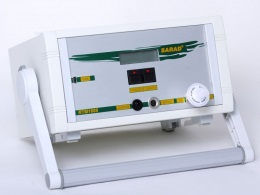

RTM 1688-2 :: Radon and Thoron monitor
Radon entry paths can be discovered by the “sniffing mode”. Soil gas sampling as well as Radon in water measurements are simple because of the built in pump.
The operation of the Radon/Thoron monitor is realised by only one button. A serial printer may be connected to the interface of the RTM 1688-2 to present a protocol directly on site.
The Radon/Thoron monitor can be directly connected to a modem for remote data transmission. The Radon Vision software (included in delivery) handles the remote connection as simply as a direct cable link.
The measurement chamber is not sensitive against humidity variations; a drying tube, commonly used in such instrument types, is not required.
Special attention was paid for the issue of quality assurance. Each stored data record contains a complete Alpha spectrum which shows the error-free operation of the instrument for each single integration interval. Any number of measurement series may be created by starting/stopping the data acquisition. The data stored within the instrument can be read by PC even if a measurement is in progress.
The small chamber volume of only 130 ml must be pointed out. The measurement of probes taken from small and limited volumes is possible due to this property.
The Radon/Thoron monitor RTM 1688-2 can be powered either by a mains power adapter or by the internal battery which gives an autonomous operation time up to 14 days.
The instrument is equipped with sensors for temperature, humidity and barometric pressure. An integrated tilt detector will give a signal if the Radon/Thoron monitor has been removed from its original position during the measurement.
Accessories
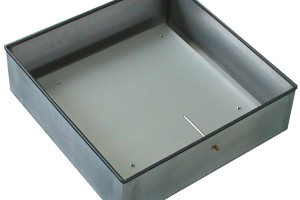
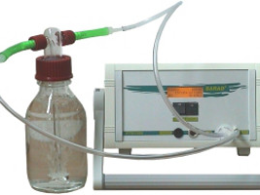
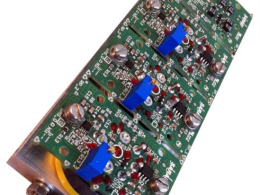
Due to the big number of target gases, different measurement principals with different behaviour regarding range, uncertainty, cross sensitivity and ambient conditions must be considered. Each user should clarify in advance the conditions and requirements for his application to select the best suited sensor.
Beside very complex and expensive analysis methods like gas chromatography or infrared gas spectroscopy, three major measurement principals are commonly used for monitoring and testing:
- non-dispersive infrared spectroscopy
- semiconductor detectors based on metal oxide
- electrochemical sensors
- Oxygen (O2)
- Carbon Dioxid (CO2)
- Carbon Monoxid (CO)
- Methane (CH4)
- combustible gases (Methane, Propane, Buthane …)
- Hydrogen Sulfide (H2S)
- Sulfur Dioxid (SO2)
- Nitrogene Monoxid (NO)
- Nitrogene Dioxid (NO2)
- Chlorine (Cl2)
- Hydrogen Cyanide (HCN)
- Phosphene (PH3)
- Hydrogen Chloride (HCl) / Hygrogen Bromide (HBr)
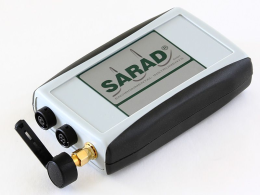
With Net Monitors it is possible to implement a wireless local network for SARAD instruments, or simple to read out the data without a cable connection. The range of the radio link is several hundred meters in case of a free line of sight. For stationary linking, the range can be extended by directional antennas. A PC adapter, called “coordinator” and at least one instrument adapter (endpoint) are required to create the network. The coordinator is connected to the PC by a USB cable. The instrument adapter can be connected to the serial interface (RS232) of the instruments. The link cable is included in the delivery. To power the instrument adapter, either the internal replaceable batteries or an AC/DC wall adapter can be used. The batteries enable an autonomous operation of several weeks. Many instruments are already equipped with an internal instrument adapter.
As soon as an instrument enters the link range of a coordinator, it will be automatically linked into the network. All SARAD software products contain already the network functionality. The communication takes place in the same way like through a cable connection. The only difference is that before any action which requires the communication with the instrument, a selection table with all linked instrument appears on the screen.
The network uses a similar standard like the WLAN with a maximum link power of 100 mW. The endpoint does not send any information as long it is not in the link range of a coordinator.

This reliable system for soil gas sampling contains a soil gas probe and a manually operated soil gas pump. Compared with simple beat probes, the tightness against the ambient air is realised by an inflatable rubber tube. To insert the probe, a hole with a diameter of 60mm must be drilled before. The soil gas pump is uses to pressure the tube as well as to determine the permeability of the soil by measurement of the fall time of the pump handle. Tube connectors allow the direct connection of a Radon or soil gas monitor. All parts are very robust and manufactured from stainless steel and aluminium. The probe can be extended by 1 Meter tube pieces.
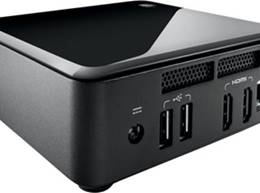
The software solutions Radon Vision (from version 6.2.0) and dVISION/dCONFIG (from version 3.3.1) contain a complete solution for TCP/IP based communication with the most of SARAD instruments. The Implementation is very easy and does not require special skills in the IT field.
The IP-Box, in fact, is a robust, tiny (15mm x 111mm x 51mm), pre-configured computer with SSD and Windows operational system. The program Instrument Server is already installed in the auto-start folder of Windows (see also application note AN-008: Internet based monitoring networks for SARAD instruments). It will be opened automatically after turning on the power. The IP-Box is equipped with several USB and serial ports to connect the instruments. The connection to the internet can be realized either by LAN cable or WiFi. The WiFi adapter is integrated in the IP-Box.
